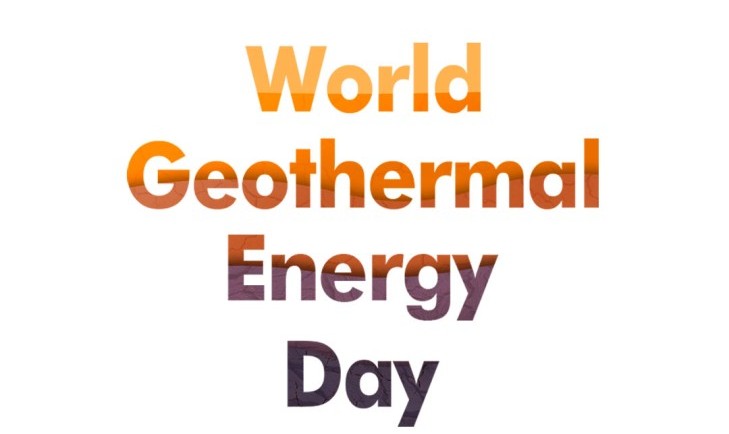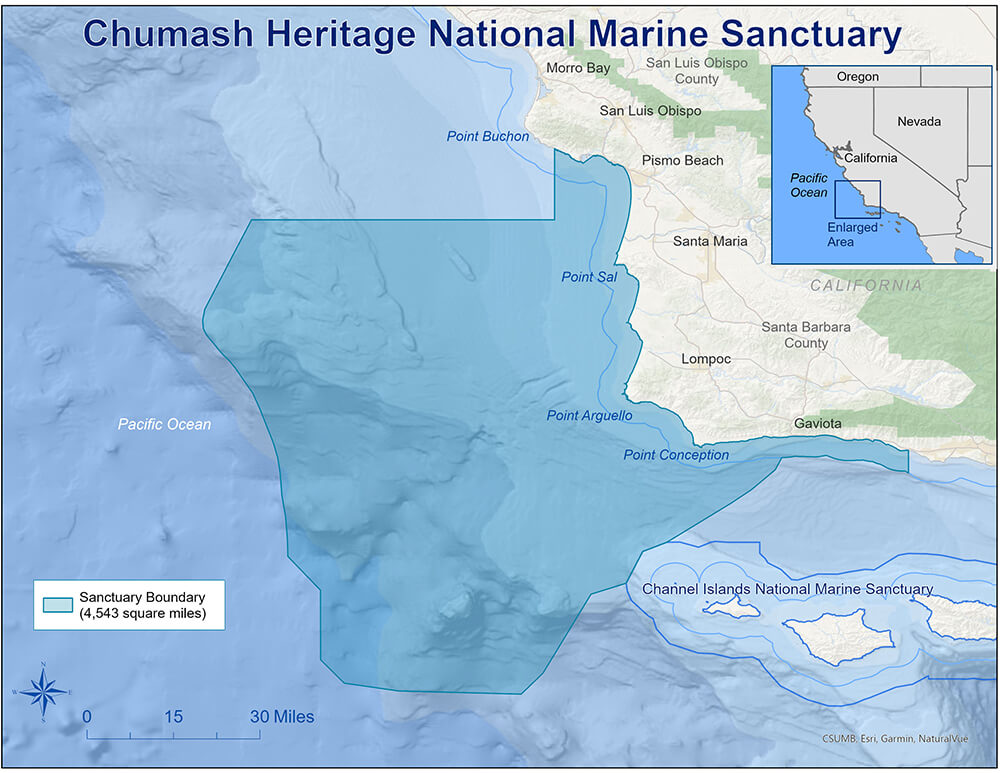10/17/24
Best of the West: World Geothermal Energy Day; new marine sanctuary; Texas-Oklahoma border; Housing Crisis Task Force; finding missing persons; western trade with Korea

The Western Governors' Association keeps you updated on the latest news in the West. Here are the top stories for the week starting October 14, 2024. (Photos courtesy of Adobe Stock Images, World Geothermal Energy Day, and the National Oceanic and Atmospheric Administration)
Thursday, October 17, was World Geothermal Energy Day, with global celebrations from Paris to Malaysia to Houston recognizing the importance and potential of the heat beneath our feet.
The celebrations highlighted geothermal history such as the world’s first and oldest geothermal power plant in Tuscany, Italy, which started generating geothermal energy in 1904.
Other highlights included the announcement of new patents in geothermal technology and resilient geothermal initiatives underway in Ukraine.
World Geothermal Energy Day comes on the heels of major progress in the development of geothermal energy in western states, especially since Colorado Governor Jared Polis’ Heat Beneath Our Feet Chair initiative with WGA in 2023.
Read about the advancements in geothermal that have been made in the year since his initiative report was released here.
Recently, the U.S. Department of Energy (DOE) released 19 case studies highlighting the versatility and potential of geothermal systems across varying climates and conditions. Nine of the highlighted projects were in western states from Texas to Alaska, representing the wide range of applications for geothermal heating and cooling.
In Colorado, Grand Junction’s Colorado Mesa University boasts one of the largest geothermal heat pump systems in North America, connecting 16 buildings and providing 90% of the energy required to operate the campus. Given the success of the system, the university has made a commitment to connect every newly constructed campus building to the geothermal system. It’s estimated that the system saves the.jpeg) university $1.5 million in energy costs every year.
university $1.5 million in energy costs every year.
Another higher education system highlighted by DOE is the College of Southern Idaho in Twin Falls. The campus began transitioning to geothermal energy more than 40 years ago and was a pioneer in using geothermal energy for a college campus. The system serves 19 campus buildings with both geothermal heat pumps and direct-use geothermal, which utilizes water that comes directly out of the ground at high enough temperatures to heat buildings directly.
Also in Idaho, the Gem State’s capitol is the only statehouse in the nation heated by a geothermal system. Governor Brad Little noted as much in his recent proclamation of National Clean Energy Week in Idaho from October 23-27.
In Washington, Seattle Public Schools are adopting geothermal heat pumps in all new and remodeled SPS school buildings. So far, 15 schools have transitioned to geothermal, with four more on the way. Each school that has adopted geothermal has replaced its gas-fired boilers and improved energy efficiency. The district now aims to retrofit two or three schools per year with geothermal.
On the National Renewable Energy Laboratory (NREL) campus in Alaska, geothermal is helping to heat the 5,000 square foot facility during harsh Alaskan winters. The system delivers 20,000-30,000 kWh of heat annually, which eliminates 700 gallons of fuel oil.
The Century Center in Bismarck, North Dakota, provides office space for 400 state employees, heated and cooled by geothermal heat pumps. The system keeps the building comfortable during both frigid winter days as cold as -40 degrees, and hot North Dakota summer days. The system saved enough in energy costs to offset initial expenses in less than three years, and the savings have accumulated in the more than 20 years since it was installed.
On World Geothermal Energy Day, the Department of the Interior announced that the Bureau of Land Management approved the Fervo Cape Geothermal Power Project in Beaver County, Utah, which will use enhanced geothermal strategies to generate up to 2 gigawatts of baseload power, enough to supply over two million homes.
Beaver County, Utah, which will use enhanced geothermal strategies to generate up to 2 gigawatts of baseload power, enough to supply over two million homes.
BLM has now approved nearly 32 gigawatts of clean energy projects on public lands, with geothermal development undergoing a significant expansion.
Marine sanctuary: the nation’s third largest marine sanctuary will soon be created off the coast of Central California.
The Chumash Heritage Marine Sanctuary will protect 4,500 square miles of rugged coastline that marks the historical homeland of the Northern Chumash Tribe. The tribe drove the effort to designate the area for more than a decade, and the area’s Indigenous people will help the National Oceanic and Atmospheric Administration manage the area.
homeland of the Northern Chumash Tribe. The tribe drove the effort to designate the area for more than a decade, and the area’s Indigenous people will help the National Oceanic and Atmospheric Administration manage the area.
Tribal co-management of protected areas has become more common recently, with Indigenous people helping to manage places like the Olympic Coast National Marine Sanctuary in Washington and the Yukon Flats Wildlife Refuge in Alaska.
Red River boundary updated: the border between Texas and Oklahoma has shifted slightly, after the Red River Boundary Commission voted to adjust the border to preserve a Texan pump station within the Texas state boundary. A seemingly trivial part of a 2000 border agreement had pushed the border back about 100 feet, causing it to run straight through the pump station.
About 2 million people in North Texas rely on the pump station for drinking water, and constructing a new station on the Texas side of the former border would have cost as much as $50 million.
Last week’s solution swaps 1.34 acres of Lake Texoma surrounding the pump station to Texas in exchange for an equal chunk of the lake to be granted to Oklahoma.
Housing Task Force: Utah Governor Spencer Cox was named co-chairman of the bipartisan National Housing Crisis Task Force, alongside Atlanta Mayor Andre Dickens, Cleveland Mayor Justin Bibb, and Fifth Third Bank’s Susan Thomas.
The Task Force intends to identify and scale promising innovations in housing production and preservation to address the nation’s housing crisis.
Cox and his fellow co-chairs penned a recent op-ed calling for state and local leaders to address the housing crisis head-on.
Check out New Mexico Governor and WGA Chair Michelle Lujan Grisham’s 2025 Chair initiative, which will focus on expanding access to housing in western states. To help the Governor design and scope her initiative, take the newly released initiative survey to provide insight into priority issues for the Governor to address over the course of the initiative.
Finding missing persons: Washington was the first state in the nation to implement an alert system specifically for Missing Indigenous Persons more than two years ago, and law enforcement officials say that the system has shown significant success in locating missing persons so far.
As of August, the State Patrol had issued 114 alerts, with the subject being located in all but 13 of those cases. Washington implemented the alerts in part to address the disparity between the state’s relatively small Indigenous population and the high number of Indigenous Missing Persons cases.
Check out WGA’s policy resolution, Missing and Murdered Indigenous Persons, for more on the Governors’ shared policy on this issue.
Western trade with Korea: North Dakota Governor Doug Burgum led a trade and investment trip to Korea this week. The Republic of Korea is the world’s second-largest exporter to North Dakota, and the 17th-largest export market for North Dakota.
The state of North Dakota and the Korea Institute of Energy Research signed an MOU to promote discussions around energy technology research and development.
Another MOU between North Dakota and the Korea Research Association for Unmanned Vehicles established a partnership to promote collaboration in Unmanned Aircraft Systems research and development. North Dakota is a leader in Unmanned Aircraft Systems technology, with the Northern Plains UAS Test Site and the University of North Dakota’s John D. Odegard School of Aerospace Sciences leading in this space.